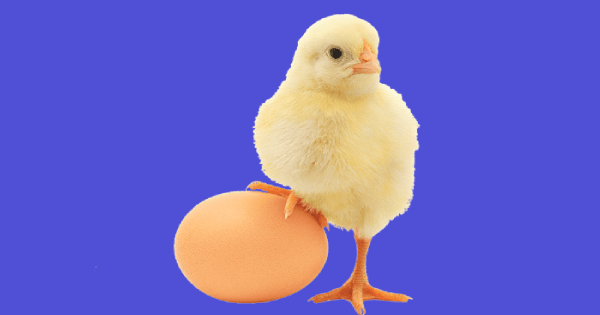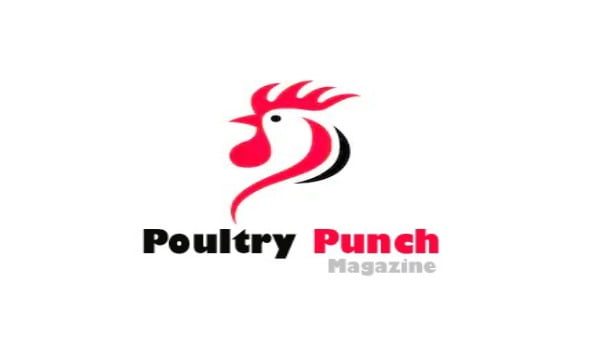Production of health promoting eggs through nutrient manipulation
S.Jayachandran, P.Selvaraj, P.Visha and V.Thavasiappan
Dept. of Veterinary Physiology and Biochemistry,
Veterinary College and Research Institute, Orathanadu – 614 625
Introduction
Egg consumption per person has decreased in some parts of the world in the last decades due to the fear of fat and cholesterol as they are associated to the cardiovascular disorders. However, there has been an increasing efforts in our country as well as in rest of the world to improve its nutritional value of eggs by enhancing nutrient manipulation.
According to the World Health Organization, the protein in egg has the highest true digestibility of major foods, and its nutritive value is also high because it contains the essential amino acids in the required proportions. Biologically important bioactive compounds could be increased in eggs by feeding different concentrations of active compounds through eggs.
Chromium
As chromium enhances the uptake of glucose, insufficient dietary chromium is associated with increased risk factors linked with non insulin-dependent diabetes and cardio vascular disease. Variables in humans that have been shown to be improved following chromium supplementation include fasting blood glucose concentration and glucose tolerance, serum insulin and insulin binding, total cholesterol and HDL-cholesterol.
The chromium content in egg yolk and albumen was higher for chromium supplemented hens than for control ones, without differences from chromium source (organic or inorganic). The chromium content increased sharply the first two weeks while decreased to two-three fold the basal level thereafter. Chromium content of egg was also increased in some experiments more than five folds by supplementation of chromium to the hen’s diet. However, chromium content decreased with time of supplementation (30 to 75 d). Therefore, it is possible to accumulate chromium in egg yolk and albumen to supply it as a chromium source for humans.
Iron
Iron-deficient anemia is probably the most prevalent human nutritional disorder, leading to reduce work performance and increased morbidity. Individuals particularly vulnerable to iron deficiency are those with high iron requirements – children and pregnant women. The relative biological value of yolk iron was not different from that of the reference salt, ferrous sulphate, without any interference of egg yolk in the absorption of organic salt.
Eggs could contribute significantly to the dietary iron supply since one standard egg contains about 1 mg of iron. Furthermore, the ration of iron to calories in eggs, 12.5mg/ 1000 kCal, is about twice that in the average diet. Eggs might be a food of choice for those who require a generous supply of dietary iron and a limited calorie intake, and iron fortified eggs will have an increased value. When hens were fed graded levels of iron from 15 to 65 ppm, a dose response was observed hematocrit and hatchability. Weight gain, hematocrit and hemoglobin were markedly improved when increasing levels of (0 to 80 mg/kg) of added iron from analytical grade ferrous sulphate were fed to the chicks. The iron content of egg yolk was increased up to 125 and 140% with inorganic and organic sources. Organic acids have been characterized as enhancers of iron absorption in human. Then it might be possible that ascorbic, citric, maleic, tartaric or lactic acids increase iron absorption by the hen. However, phytates, polyphenols and several vegetable proteins, all likely to be present in the hen’s feed are known as inhibitors of iron absorption. Also there is an interaction between manganese and iron, in which excess manganese impairs iron utilization, but excess iron does not antagonize manganese.
Iodine, manganese and selenium
Feeding potassium iodide, kelp, iodized linseed meal to laying hens resulted in high egg uptakes of this element that were 10 times the basal level (up to 400 µg/egg) when 16 mg/kg iodine from these source were fed (NRC 0.3 mg/kg). egg iodine can be increased markedly and it has recently been postulated that kelp-fed laying hens may produce eggs that reduce blood cholesterol in human subjects.
Manganese levels in egg yolk responded only fractionally of the increase in the dietary manganese supplement. Adding 60 mg/kg of manganese to a laying diet containing 37.5 mg/kg (NRC 30 mg/kg) increased egg yolk manganese levels from 156 to 222 pg/egg. However, there is an impairment of iron absorption when high levels of manganese are fed.
Egg selenium values reflect changes in dietary selenium in a short period of time. In addition, various selenium compounds give different pattern of distribution because egg white proteins are synthesized in the oviduct and yolk proteins are synthesized in the liver. Selenium-methionine was particularly effective in increasing egg albumen selenium concentration while sodium selenite and selenium cysteine were more effective in increasing egg yolk concentration. It is found that increments up to five fold in selenium content of eggs ( from 2 to 10 pg/egg). Appropriate selenium supplementation of rations for laying hens may help to provide for selenium needs of the human via the egg.
Vitamin A
Vitamins in the egg would be expected to vary with the concentration in the feed. At higher dietary levels liver storage increased markedly while egg yolk level continued to increase at a moderate rate. Over the range of 2600 to 22000 IU/ kg diet liver storage of vitamin approached a 200 fold increase while egg yolk vitamin content doubled (NRC 4000 IU/ KG, 117 IU/egg). There is a delay of 10 weeks on the supplementation of the diet with vitamin A and increase of this vitamin in the egg, as liver act as a regulatory storage.
Vitamin D
In contrast to the situation with vitamin A, there is a linear relationship of dietary vitamin D to vitamin D in egg yolk. Excess vitamin D is absorbed, transferred to the ovary and secreted in egg yolk during its formation. In other experiments, the concentration of vitamin D2 in the yolk was 14.5 IU/g when the concentration in the diet was 20 IU/g. Hence egg yolk can be fortified with vitamin D in order to increase its nutritional value.
Vitamin E
When vitamin E was supplemented at 200 pg/g of feed, the concentration of vitamin E in the egg was 188 pg/g. eggs from laying hens fed diets with 10 (basal level), 200, 2000, 20000 mg/kg of alpha tocopheryl acetate contained up to 2, 15, 100 and more than 200 mg alpha tocopherol per respectively. The increase in vitamin E content of the egg was in a dose dependant manner. It becomes clear that those enriched eggs may be effectively used as a good source of vitamin E for human consumption.
All together from earlier results indicate that vitamin E enriched eggs may have a very good prospect to use in the processing industry and consumer preferences.
Carotenoids
Singlet molecular oxygen has been shown to be generated in biological systems and is capable of damaging proteins, lipids and DNA. When the ability of some biological antioxidants to quench singlet oxygen was studied, the quenching ability of carotenoids was higher than that of tocopherols. Supplementation of broiler breeder diets with 400 ppm of beta carotene, canthaxanthin or lutein increased their respective concentrations in the yolk up to 14, 426 and 701 ppm respectively, being lutein the most effectively deposited. When single comb White Leghorn laying hens were fed diets supplemented with beta carotene, DL-alpha tocopheryl acetate or their combination, yolk concentration of beta carotene increased from 0.14 to 5.19 ppm at 200 ppm diet inclusion. Therefore, it is possible to significantly increase the concentration of beta carotene and retinol in chicken eggs. However, because of the relative expense involved it may not be very attractive from the commercial standpoint to increase egg yolk concentrations of beta carotene in the diet. Increments in the lutein content of egg yolk are much more feasible and economical.
Omega-3 fatty acids
In the 1950s, it was discovered that polyunsaturated vegetable oils had pronounced plasma cholesterol lowering effect, and it was also noted that fish oil had a similar effect. In the early 1980s the concept that omega-3 fatty acids could be beneficial to heart health gained nutritional attention. Docosohexaenoic acid decreases blood platelet function and is highly concentrated in the brain where its depletion leads to functional impairments.
The physiological effects of omega-3 fatty acids are lowering of plasma triglycerides, increased aggregation time for platelets, decreased viscosity of blood, decreased blood pressure, reduction in atherosclerosis, reduction in inflammation and reduction in tumors. Docosohexaenoic acid and eicosapentaenoic acid enriched eggs reduced serum triglycerides and blood pressure. Related results with linolenic acid enriched eggs showed no such beneficial effects but did improve the ratio of omega-3/ omega-6 acids. There are two main approaches in order to increase the omega-3 content of the eggs, either the enrichment of the diet with linolenic fatty acid or a vegetable source diet (flaxseed, rapeseed, linseed or the addition of any source of eicosapentaenoic and / or docosohexaenoic fatty acids.
The flavor scores of eggs from control diet were more favorable than those of eggs from linolenic acid diet, but their differences were only minor. Some differences were also found among laying hen strains on arachidonic acid and docosohexaenoic fatty acids as well as for the flavor scores of hard boiled eggs with linolenic acid diets. When 2% refined fish oil was added to hen’s diet, no differences were found for egg taste not flavor. Dietary herring meal level did not influence the total lipid content of the egg yolk. But significant incorporation of omega-3 fatty acids in the egg was obtained by feeding herring meal at 4-12% to laying hens, with a linear relationship. Three percent of dietary menhaden oil increased yolk omega-3 fatty acids: linolenic acid from 14 to 21-25 mg/egg, eicosapentaenoic acid from 4 to 15-28mg/egg, docosohexaenoic acid from 19-39 to 123-178 mg/egg; while the ratio of omega-6/ omega-3 acids decreased from 15 to 3.
Cooking did not significantly alter the levels of omholesterolega-3 or omega-6 long chain polyunsaturated fatty acids in the egg. Alterations in fatty acid composition did not significantly affect characteristic functional properties of eggs.
Cholesterol
Although cholesterol is a very small part of an egg, it has received as much attention as the major yolk components because of its continuing interest for human nutrition. Attempts at controlling the cholesterol content of eggs by variations in normal diets have not been completely successful. It has been hypothesized that the inability to achieve reduced levels of cholesterol by selection is due to a physiological control mechanism which ultimately causes cessation of egg production when egg yolk cholesterol deposition is adequate for embryo survival.
Therapeutic antibodies
Passive immunization, as opposed to vaccination, consists of oral administration of antibodies for disease prevention, and has emerged as an alternative to the use of antibiotics, without any possible resistance from the microorganisms. Passive immunization requires large amount of antibodies.
Avian IgY can be produced in larger amounts and lesser cost than mammalian IgG, and it has additional advantages: welfare of the antibody producing animals, the collection of antibody source is much easier, there are less cross reactions when administered. Moreover, antigen binding and bacterial cell agglutinating capacity of the IgY remains after heating up to 70 ºC for 15 min, after digestion with alimentary tract proteases, freezing and freeze-drying repeated several times. Considering its availability to obtain in the technical scale, it seems a good idea to select yolk gamma globulin, as a food additive to fortify the products ability to last longer and be safer for the consumer. The specific antibody enriched eggs can be directed either to human or livestock disease prevention, and several reports have been published recently confirming its efficacy in both cases.
Since mammal-derived antibodies are immunogenic in patients, egg yolk IgY obtained from immunized laying hens could be the most cost effective treatment, rather than recombinant DNA technology. Therefore, eggs can be considered a convenient source for the production of polyclonal antibody specific to a variety of antigens.



